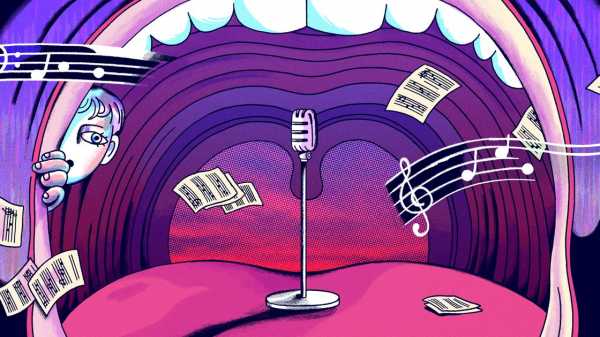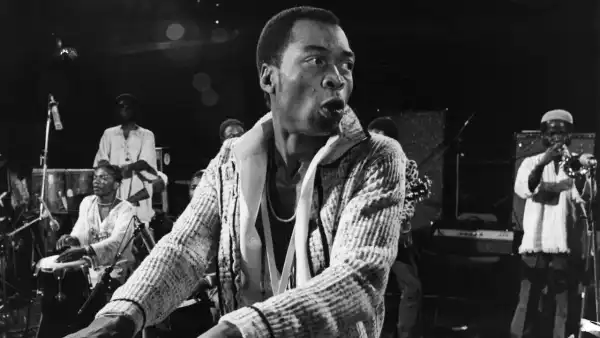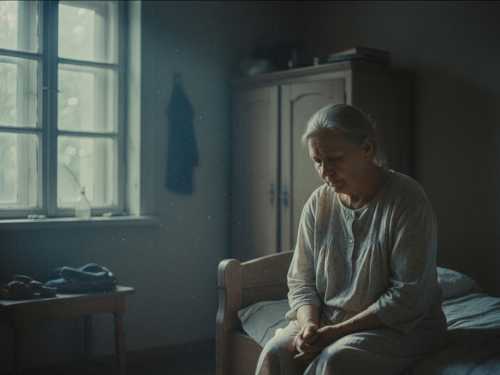
At a certain point several years ago, I needed to figure out whether I was a baritone or a tenor. This was a matter of considerable urgency, because baritones had a depth and oaky solidity to their voices that I admired, while tenors seemed like shifty, ambiguous creatures, artistically and otherwise. Rudy Vallée was a tenor, for example, singing those high wobbly songs through a megaphone, and his career had been crushed by the advent of Bing Crosby and what one critic called his “creamed-corn baritone.” Neil Young was a tenor, too, whose creaky conquest of the upper register had an almost Martian sound to it. Neither of these guys was anything to scoff at, of course. I could accept a tenor voice as my cross to bear. But I wanted to know. So one day I asked my friend Karen, a cabaret singer, “What am I?”
We were standing in her front hallway, and Karen had just put her young son to sleep. To avoid waking him, we conducted our conversation in a whispery, unaspirated way that was the opposite of singing.
“Well,” she said, “Lots of people are most comfortable singing in their natural speaking range.”
“What would that make me?” I said, trying to deepen my voice and whisper at the same time.
“I’m not sure. You might be in the middle. Sometimes it’s a matter of temperament more than vocal equipment.”
Temperament? This just confirmed that my identity was crucially tied to the question. Vocal range, it seemed, was a Harry Potter-style Sorting Hat for human beings, and the question of baritone versus tenor was really just scratching the surface. The Germans (of course it’s the Germans) have something called the Fach System, which slots singers into twenty-five different operatic categories on the basis of range, timbre, age, height, build, speaking voice, and various other factors. Just glancing at the classifications took me down a rabbit hole. Could I be a Jugendlicher Heldentenor, with a bright enough upper range to punch through the soggiest orchestration? Or perhaps I was a manly and metallic Kavalierbariton, ideally suited for sex-addict roles like Don Giovanni. In any case, the idea wasn’t to become an opera star. I only wanted to figure out who I was on the basis of my voice. This would require singing lessons, which my girlfriend, sensing my frantic scramble for a vocal identity, was kind enough to procure.
My teacher, Bill, instructed me in his Chelsea apartment, in a front room crammed floor to ceiling with mementos, sheet music, and sports paraphernalia. He was a vocal coach, composer, and pianist, whose keyboard finesse in a Manhattan bar had once earned a compliment from Frank Sinatra: “Pretty, baby, pretty.” He had also been an acolyte of the composer Kay Swift, who was not only the first woman to write a Broadway musical but had also been George Gershwin’s lover for ten years—meaning that I was now connected directly to the heart of the Great American Songbook. It was like knowing a guy who knew a guy who knew God. If the comparison seems blasphemous, let’s recall the central role of the songbook in this nation’s culture. We don’t call them standards for nothing: they exude the off-the-cuff elegance and colloquial zing that are supposed to be our hallmark. Also, they’re beautiful, and economical enough to break your heart with a single phrase.
At first, it was all exercises, with Bill at the piano and me standing there. He made me sing sequences of vowels, which changed the interior shape of the mouth: EUEAEO. He made me sing with a straw in my mouth and with a hard candy between my teeth. Sometimes, he asked me to bend over and sing while I studied the carpet and his slippers, which were embroidered with the logo of the Pittsburgh Steelers.
“Now we’re cooking,” Bill would say, once I had done this for twenty minutes or so. Then we did scales, up and down the keyboard, as I collapsed back into the rag-doll posture that was supposed to release all of my abdominal tension. “I want the sound to slowly move up your spine, vertebra by vertebra,” he told me. He also complimented me on my falsetto, which was a surprise to both of us—a kind of secret power, allowing me to visit those heights where only women (or castrati) were truly at home.
Up to this point, you could say, what I was doing was purely technical. It was not expressive. Yet the singing voice has an inherent magic to it, which the sheer physicality of the process can easily mask. The most exquisite melody on earth begins as an impulse in the diaphragm, pushing a column of air up into the larynx—a miniature temple of breath and sound production, where the vocal cords hang in a sort of fleshy Ark. The vibrating cords are what allow us to hum, groan, speak, shout, sing. But all of these things would be inaudible without the resonant cavities of the throat and the sinuses and the chest. What appears to emanate from the mouth—all of that beauty and emotional power—comes from elsewhere in the body. The mouth is merely the escape hatch.
Bill directed me to contort my mouth into a variety of shapes: different aperture, different sound, all of it further modified by the pincer movement of the tongue and the soft palate. He told me not to let my jaw tremble when applying vibrato—that was supposed to come from elsewhere, further up the supply chain. We didn’t talk much about where to apply vibrato, because that was an interpretive choice, and one with many pitfalls. Please, dear Jesus, I thought, spare me the slow vibrato known as the vocal wobble, or the fast trilling type that can be caused by pressure at the root of the tongue, and which makes you sound like a helium-huffing Édith Piaf, fine for her but curtains for everyone else. Let me simply supply that extra oomph, the intensification of feeling that flows so mysteriously from a tiny variation in pitch. Words seem beside the point when pure sound can make you weep, or rejoice, or change your life. To hell with words.
Except that words were about to become crucial indeed. Bill had directed me to choose a song, which we would work on for the next couple of sessions. I came up with “Like Someone in Love,” which Jimmy Van Heusen and Johnny Burke had composed in 1944. The song, a magnet for brilliant ballad singers, made its first appearance in “Belle of the Yukon,” where Dinah Shore sings it to her piano-playing love interest. Bing Crosby had a hit with it the next year, and he was followed by many more contenders, including Ella Fitzgerald (who slowed it to a crawl) and Chet Baker (just this side of comatose) and, more recently, Björk, who seemed to take a breath after every two or three words. Her performance reminded you that it was a body and not merely a soul singing, that the sound needed to be nourished by something terribly mundane, like oxygen and cigarette smoke.
But it was a version by Frank Sinatra that had led me to the song. Sinatra was somebody so obsessed with breath control that he used to swim endless laps underwater to boost his lung capacity. But his approach, here and elsewhere, was the opposite of Björk’s: he wanted to sing in such seamless legato phrases, with no apparent intake of breath, that his human limitations would be forgotten. On the other hand, he phrased in a such a conversational manner, with such candor and barely submerged fragility, that his human limitations were all you could think about.
This is how he sings “Like Someone in Love” on his 1954 album “Songs for Young Lovers,” with a nice small-band arrangement by Nelson Riddle. It begins with a flute-and-harp intro, and then Sinatra eases into the lyrics in his light Italian baritone. The words—three verses about being romantically bewitched and bewildered—are nothing special. Indeed, they have a slightly narcotized sound to them. The first one goes like this:
Lately I find myself
Out gazing at stars,
Hearing guitars,
Like someone in love.
Sometimes the things I do astound me,
Mostly whenever you’re around me.
But Sinatra knew where the secret center of the melody was. Every song has one. In “Like Someone in Love,” it starts in the sixth bar of the verse, where the melody goes down a step, is enfolded in the sugary embrace of a major seventh chord, climbs up a sixth, and descends a step again. This all sounds technical, but it is not. It is anything but. It is a way of making you feel, and in a language not your own.
For one long session, Bill had me sing “Like Someone in Love” over and over, and I remained devoutly focussed on technique. We were still in the heyday of “American Idol,” and being called “pitchy” was something to avoid at any cost. So I chased after those notes and tried to nail them, especially the sweet spot in the sixth bar.
Paradoxically, this meant that I was missing the entire point of the song—possibly the entire point of singing. This came to light at the next session, when Karen attended to advise me on phrasing and expression. She and Bill sat on either side of me, my two gurus, and listened as I bulldozed my way through. Karen praised the warmth of my voice but asked me what sort of story the song was telling. What did the singer know at the end that he didn’t at the beginning? I gave her a blank look. I had essentially been treating the lyrics as nonsense syllables. The idea that I should be enacting an inner drama—the discovery that love alters everything, that it is a kind of emotional windfall, the Comstock Lode of human feeling—simply hadn’t occurred to me.
Now it did. I saw that I had to convey this discovery in small increments. There had to be something tentative in the way I sang the first few lines. Initially, the star-gazing speaker has little grasp of what’s happening: with his woozy affect and auditory hallucinations, he might as well have the flu. He feels like someone in love. That is, the feelings are generic, as if they belong to some other, luckier person. What comes next is the astonishment that such feelings might be his own.
Again, I can’t make any great claims for Burke’s lyrics. They’re mostly cliches, and in the Viagra era, it’s hard not to snicker at a guy who goes “limp as a glove” every time he looks at his belovèd. But the words are changed as they go through their melodic paces. They become more tender, more shy, more sly—a delicious means of self-disclosure. So that’s how I sang the song the second time through, diffident at first, then increasingly joyful. Nothing is more audible than joy.
“Much better,” Karen told me. Bill, in his sports-themed slippers, nodded in agreement.
I sang it a third time. When I listened to recordings of my performances afterwards, the pre-Karen versions sounded embarrassingly robotic to me. How could I have treated the words as empty syllables? But even the later versions had a strange capacity to make me cringe. In retrospect, I see that my problem was historical. As a teen-ager growing up in the seventies, I had viewed the Great American Songbook as Wonder Bread, processed within an inch of its life and strictly for old people. It was elevator music, it was something you sang in a cardigan, it was the toothless, lifeless cultural product that had been forever displaced by the British Invasion and everything that came after. So even as I grew to relish those songs as an adult, I retained a suspicion of them, and a self-consciousness about expressing emotions that seemed to belong to my parent’s generation.
Crippling, isn’t it? Also silly. You could argue that emotions do change, and that the popular songs of the moment teach us exactly how to feel them—that they are, in a sense, an instructional manual for each new iteration of joy, grief, anger, disillusion. Maybe mid-century romance, nourished by Tin Pan Alley, was different. Maybe it was both beautifully plainspoken and beautifully circumspect, at least compared to the sexual free-for-all that erupted in the late sixties, which I knew about mostly from watching “Love, American Style” on television. Or maybe the bedrock emotions remain the same, and only the vocabulary changes.
What I know is that listening to myself sing “Like Someone in Love” made me blush: an old-fashioned response to an old-fashioned song, which indicated that I was saying too much, and too directly. It made me want to retreat back behind the ironic ramparts. Was this a bad instinct? W. B. Yeats, no slouch when it came to irony, also knew when to ditch it, frequently pining for what he called the “old high way of love.” He meant romance without rhetoric, deep feeling without the defensive crouch so often adopted by people who think too much in the first place. Perhaps that’s what “Like Someone in Love” could teach me. Even as I recoiled from its mushy lyrics, the ardent melody did something to me, the way a strong feeling does. I waited, waited, waited to feel my skin prickle in the sixth bar, and, as I sang the song in a low, grainy, confiding voice, I decided that I was a baritone after all.
I had finally gotten a purchase on my true Fach, my sonic Self. This was who I was. And identity being what it was, a contingent thing, I instantly started preparing myself for the next phase. As we grow older, the tissue in the larynx thins out, which is what causes many aging males to have those higher, querulous voices. It is a tone we can all recognize. It is the sound of late middle age, plaintive or wise or resigned, but what it lacks is the dark sumptuousness of a real baritone. It is, God forbid, the sound of a tenor, with its overtones of crinkling paper and the sighing screen door—just what I was trying to avoid. On the other hand, Frank Sinatra’s voice deepened and darkened as he grew older. As his collaborator Sammy Cahn put it, “He went from violin to viola to cello.” Either way, a singer starts as one person and ends up as somebody else, aiming for some approximate harmony with whatever he used to be.
Sourse: newyorker.com






